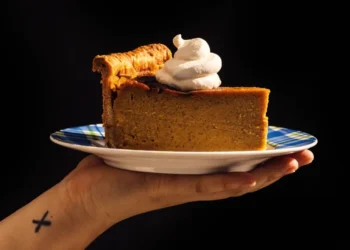Why Americans love ice and Europeans can live without it
July 25, 2025 – 11:40 AM
When American travelers visit Europe during a summer heatwave, one common culture shock awaits at cafes and restaurants: drinks without ice. While many in the U.S. consider ice an essential part of refreshment, Europeans often serve beverages at room temperature—or with just a token cube. But this difference isn’t just a matter of preference; it’s a deeply rooted cultural contrast shaped by history, climate, and even economics.
A surprise for Americans abroad
Whether in Paris, Rome, Athens, or London, American tourists often express confusion or frustration when a drink arrives without ice. Some, like New Yorker Isabel Tan, try to find creative workarounds.
“In Italy, it was so hot I jokingly asked for a bucket of ice—and they actually brought one out,” Tan recalls. Her TikTok video about the incident resonated with thousands, sparking a wave of memes and social media commentary from Americans encountering Europe’s “ice-free” culture.
This phenomenon isn’t new, but it has gained attention with each summer’s influx of American travelers.
A uniquely American habit
Jonathan Rees, historian and author of Refrigeration Nation: A History of Ice, Appliances, and Enterprise in America, says the American love affair with ice is unique.
“The entire world does not have as much interest in ice as the United States does,” Rees explains. “We’re accustomed to having ice in everything—it’s very much an American thing.”
Author Amy Brady agrees. Her book, Ice: From Mixed Drinks to Skating Rinks – A Cool History of a Hot Commodity, explores the history and consequences of America’s obsession with frozen water. “Americans are unique on the world stage in terms of our absolute obsession with ice,” she says.
Tan, who grew up in Singapore, notes that in many Asian cultures, warm drinks are traditionally seen as healthier. But after living in New York, she adapted to the American norm. “Even in my Stanley Cup right now, there are ice cubes,” she says. “I prefer iced drinks—even in winter.”
Not everyone wants it
For many Europeans, however, ice is more a nuisance than a necessity. UK-based Claire Dinhut, who has lived in Athens, Prague, and the UK, is not a fan.
“I really don’t like ice,” she says. “It dilutes the drink, spills easily, and sometimes feels like it’s being used to mask small portions.”
Even those with American ties don’t always adapt. “My partner, who’s British, always asks for no ice in the U.S., and that confuses servers,” says Lacey Buffery, a Brit who has lived in California for five years.
The difference often boils down to habits formed from childhood and what each culture considers “refreshing.”
A history of cold drinks in America
The American preference for icy drinks dates back to the early 1800s. Boston businessman Frederick Tudor—nicknamed the “Ice King”—pioneered the global ice trade, shipping blocks of ice to tropical regions and American cities alike.
“He sent ice to India, the Caribbean, and the southern U.S.,” says Rees. “He even gave ice away to taverns so customers would get used to cold drinks and come back for more. It was a brilliant strategy.”
Brady adds that by the late 19th and early 20th centuries, ice had become a status symbol in the U.S. “Owning an icebox was like having a TV or a car—it signaled middle-class success.”
In contrast, European cities—especially those with temperate climates—never developed a similar demand. Cold drinks were less necessary, and the infrastructure to support widespread ice use never caught on.
Still a rarity across Europe
Today, despite climate change driving up summer temperatures across Europe, ice remains an exception rather than the norm. European cafes and restaurants often don’t stock large amounts of ice or have automatic ice machines like those common in American hotels.
In Paris, Canadian expat Zoe McCormack says she frequently struggles to get a truly cold drink. “The water comes lukewarm in tiny glasses,” she says. “Even the cans in the grocery store aren’t very cold.”
Refrigeration standards also differ. U.S. homes typically have large fridges with built-in ice dispensers. In the UK, compact fridges without such features are still the norm.
“We had an ice tray in the freezer growing up,” says Buffery. “But we couldn’t make a lot of ice. Now, in California, I love having a fridge that gives me ice instantly.”
It’s more than just the ice
Some argue that the American tradition of free refills fuels the demand for ice. “In the UK, we pay per drink,” Buffery notes. “So who wants to keep paying for a cup filled mostly with ice?”
Historian Rees says the American willingness to accept dilution in exchange for coldness is telling. “It’s as much about what we’re used to as it is about taste. The crackle of the ice in a glass—that sound makes us happy.”
Even so, he recognizes the cultural divide. “When I travel, I know I won’t get ice everywhere, and that’s okay. I’m there to experience a different culture, drinks and all.”
Europe is not a monolith
It’s important to note that not all of Europe resists ice. In southern Spain, for example, a jug of tinto de verano is usually packed with ice. And chilled rosé in Provence or gelato in Italy can offer relief from the summer heat.
“There’s no ice shortage in Europe,” Rees clarifies. “It’s just not customary. And you may find a restaurant that simply doesn’t have any.”
Travelers often assume that cultural differences are inconveniences, but Brady encourages a more open-minded approach.
“Instead of thinking tepid tea or water is less clean or less tasty, try viewing it as a different culinary tradition,” she says. “That perspective will make your travels richer—and help you avoid coming across as entitled.”
Final thoughts: embrace the difference
Whether you prefer an overflowing glass of crushed ice or a gently chilled drink, your experience abroad may challenge your habits. But as more Americans explore Europe and the world gets warmer, understanding these differences matters more than ever.
For now, ice remains one of the small—but telling—ways that American and European cultures diverge. And perhaps that’s part of the charm of international travel: discovering not just new sights, but new tastes, temperatures, and traditions.
This article was rewritten by JournosNews.com based on verified reporting from trusted sources. The content has been independently reviewed, fact-checked, and edited for accuracy, neutrality, tone, and global readability in accordance with Google News and AdSense standards.
All opinions, quotes, or statements from contributors, experts, or sourced organizations do not necessarily reflect the views of JournosNews.com. JournosNews.com maintains full editorial independence from any external funders, sponsors, or organizations.
Stay informed with JournosNews.com — your trusted source for verified global reporting and in-depth analysis. Follow us on Google News, BlueSky, and X for real-time updates.














